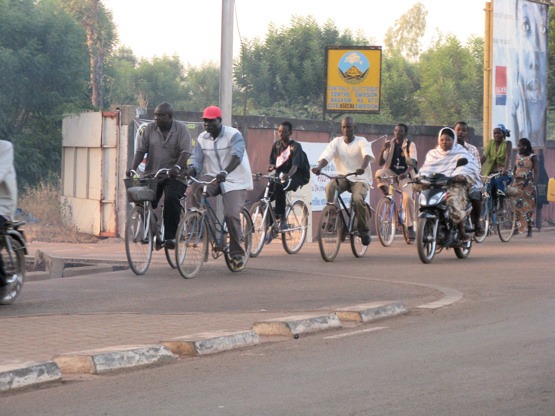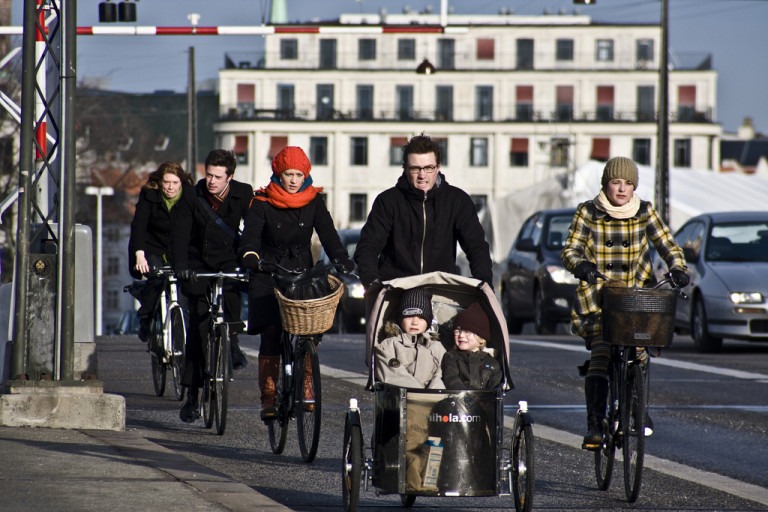[vc_row type=”in_container” full_screen_row_position=”middle” scene_position=”center” text_color=”dark” text_align=”left” top_padding=”30″ overlay_strength=”0.3″ shape_divider_position=”bottom”][vc_column column_padding=”no-extra-padding” column_padding_position=”all” background_color_opacity=”1″ background_hover_color_opacity=”1″ column_shadow=”none” column_border_radius=”none” width=”1/1″ tablet_text_alignment=”default” phone_text_alignment=”default” column_border_width=”none” column_border_style=”solid”][vc_column_text]
In both emerging and postindustrial economies, the health and safety hazards of environmental degradation and pollution can no longer be ignored. While for decades, sustainable development programs have centered largely around roads and motorized vehicular transport, authorities and planning commissions all of the world are coming to terms with the benefits of promoting and investing in active and zero-emission transport, namely: cycling.[/vc_column_text][vc_column_text]Bicycles were more popular and more affordable than automobiles in many parts of the world for large parts of the 20th century (India, China, Vietnam, Nigeria, among others). The rise of the auto, however, closely followed that of industrialization. Bicycles quickly gave way to cars, as roads rapidly became less friendly to cyclists. We have seen from the experiences of Denmark and the Netherlands that conscious efforts must be taken to invest in bicycle infrastructure. The cycling culture in these countries was not built overnight. It is also clear that cycling can thrive even in modest circumstances, and Burkina Faso is a case in point.[/vc_column_text][/vc_column][/vc_row][vc_row type=”in_container” full_screen_row_position=”middle” scene_position=”center” text_color=”dark” text_align=”left” top_padding=”30″ overlay_strength=”0.3″ shape_divider_position=”bottom”][vc_column column_padding=”no-extra-padding” column_padding_position=”all” background_color_opacity=”1″ background_hover_color_opacity=”1″ column_shadow=”none” column_border_radius=”none” width=”1/1″ tablet_text_alignment=”default” phone_text_alignment=”default” column_border_width=”none” column_border_style=”solid”][vc_column_text]
At MODL, we embarked a novel study of household bicycle ownership on a global scale. Our results produced four characteristic levels of ownership and also showed that from 1989 through 2012, ownership has actually not grown at the household level. It is great to see that interest in cycling has picked up worldwide, but more needs to be done to quantify and qualify current trends and needs. What role do other factors or indicators play in affecting the rate of ownership? What network structures exist among countries with regard to ownership? Most importantly, what drives bicycle usage? Other elements, such as bike-sharing programs, must also be taken into account.[/vc_column_text][/vc_column][/vc_row][vc_row type=”in_container” full_screen_row_position=”middle” scene_position=”center” text_color=”dark” text_align=”left” top_padding=”30″ overlay_strength=”0.3″ shape_divider_position=”bottom”][vc_column column_padding=”no-extra-padding” column_padding_position=”all” background_color_opacity=”1″ background_hover_color_opacity=”1″ column_shadow=”none” column_border_radius=”none” width=”1/1″ tablet_text_alignment=”default” phone_text_alignment=”default” column_border_width=”none” column_border_style=”solid”][vc_column_text]

Cyclists on a road with Burkina Faso with a physically separated cycle track. (Source: Justin Walker)
We are also interested in contributing to work being done in designing optimal bicycle networks. Various modeling approaches, particularly mixed integer programming (MIP), can be harnessed in providing relevant solutions to the network design problem (NDP) as it relates to bicycles. Issues of facility location, accessibility to nodes of interest and integration with other transit services remain relevant. Sustainable transportation in the pursuit of improved public health outcomes and optimal mobility must incorporate bicycle usage, and best practices in infrastructure development can only be enhanced by appropriate modeling. Data is also not always available, and more would have to be done in the area of data collection and also making the best use of the current available information.[/vc_column_text][/vc_column][/vc_row]

